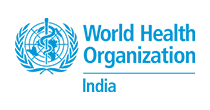Percentage of adolescents who are anaemic
Data Source : NFHS-4 [2015-16]
| | | | | | | | | | | | | | |
| 20-29 | 30-39 | 40-49 | 50-59 | 60-69 | 70-79 | 80-90 |
Adolescents
Percentage of adolescents age 10-19 years who have different deficiencies
Data Source : CNNS
In Focus











